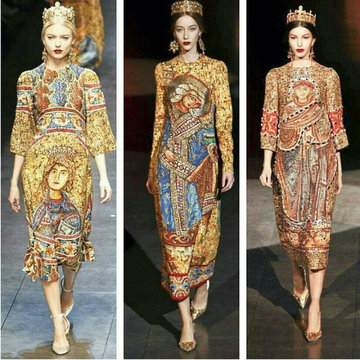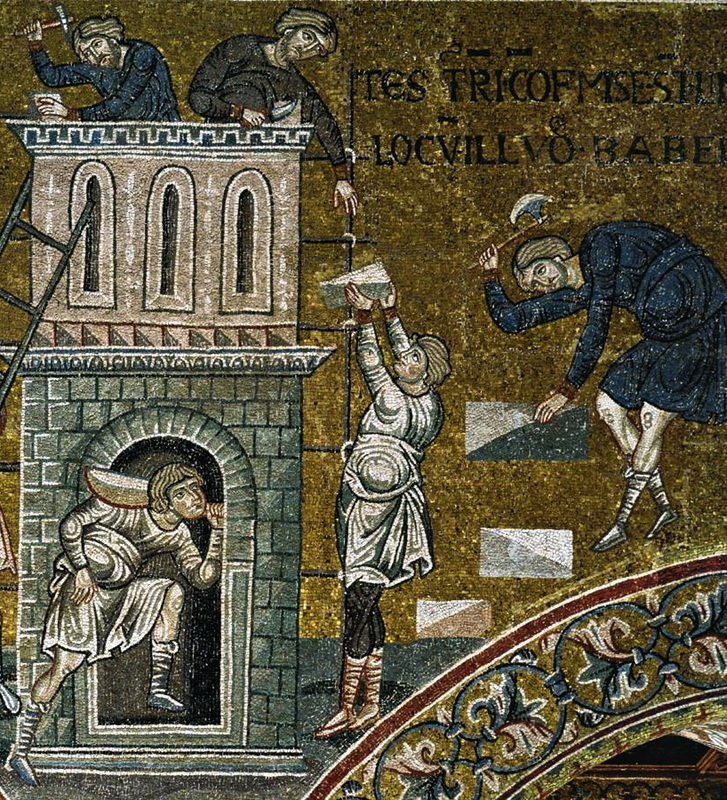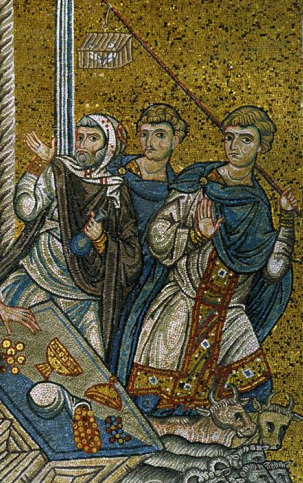
This has been a good week to be a specialist on the Byzantine Empire. Usually, the name alone is enough to inspire a blank look, prompting a scratch of the head and a raid of the memory banks to remember when it flourished, where it was and what it was; it's the look perfected in fact by winner of Best Male Model award, Hansel.
I never expected that I would have one of the world's leading fashion houses to thank for putting a spring in my step until I saw pictures of Dolce & Gabbana's fall & winter collection for 2013, unveiled at Milan Fashion week a few days ago.
It is all wonderfully post-modern. The wealthy women who will wear these clothes (the men's collection has no Byzantine reference - boo!) will parade powerful images of their wealthy predecessors: rulers, donors and saints. Were rich women today really more liberated than in the past? Will choice by about which item(s) to buy be based solely on colour - will it matter if the image is one of someone who was brutally martyred? And was that any different to a worshipper who looked at the images a thousand years ago - did they know who was in the picture either?
What I like best of all though as the images were not taken from imperial Constantinople, but from Norman Sicily. With delicious irony, they were put up by the Dolce & Gabbana of their day. The new Norman rulers who conquered the island wanted a magnificent cathedral. And they wanted bling by the bucket-load. Those mosaics are the fall/winter collection circa 1180. Those are the latest costumes, the finest fabrics and the latest looks in the medieval Mediterranean.
There's even a late 12th century parallel from Zoolander where Derek goes down the mines: hard labour as a source of spiritual redemption.
| Or here is Derek with Meekus and his housemates flashing Magnum in Zoolander (below) and, on the right, their medieval equivalents at Monreale: |
Once upon a time, religion and faith used to be about having fun, slapping gold on the walls of cathedrals and celebrating the good times. The medieval rich were ferocious philanthropists, endowing churches and paying for monks to do the hard work of praying for their souls, a neat combination. No surprise then that when that all turned around in the Reformation - and dour sullen solemnity took over - it killed fashion too: Vogue would have been pretty slim in 17th century Europe with one black gloomy costume after another. Not much celebration on the catwalks or back at the crib; and forget about celebrating at church (which, is what 'eucharist' means after all).
Anyway, I can't wait to see the collection in real life, and will post when I do. After all, it's not everyday you find that after centuries in the shadows, not only is Byzantium hot, but that it is hot (well, haute) couture. And better still, it's coming to a boutique near you soon.




 RSS Feed
RSS Feed